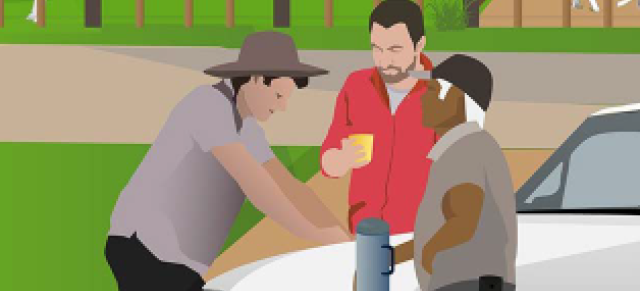Follow this Safe Work Procedure when operating tractors. All operators must refer to the operator’s manual prior to operating the tractor.
What are the minimum operator requirements?
- Operator must be a minimum of 15 years old, unless they are 13 years or older and:
- Are fully trained in using the tractor and any implements attached to it
- Are in a safe position on the tractor or implement
- Are the only child on the tractor
- Operator must be under direct supervision until assessed as competent by person in charge of the workplace
- If driving on a public road up to 40 kph, operator must hold at least a Class 1 driver license (car license) or international equivalent
- If driving on a public road over 40 kph, operator must hold at least a Class 1 driver license (car license) with wheels endorsement, or international equivalent
What equipment do you need?
- Personal Protective Equipment requirements vary depending on whic task the tractor is being used for (i.e. spraying). Minimum requirements are:
- Hearing protection (unless the tractor has a sound proof cab)
- Safety boots
- First aid kit
- Fire extinguisher
- Cell phone or 2-way radio (not be used during operation)
General Procedure
- Check the tractor and any attachments before operation to make sure they are serviceable and are free of bird’s nests
- One seat—one person. Do not permit anyone but the operator to ride on the tractor except for driver training. When used for training, use the additional training seat in the cab
- Always sit in the driver’s seat while starting the tractor
- When driving on public roads, have consideration for other road users. Pull in to the side of the road occasionally, when safe, to allow any following traffic to pass
- Use a slow moving vehicle sign and do not exceed 40km/hr on public roads
- Reduce speed before turning or applying the brakes. Brake both wheels simultaneously when making an emergency stop. Ensure brake pedals are locked together when traveling at road speeds
- Use extreme caution and avoid hard application of the tractor bakes when towing heavy loads
- Keep the tractor in the same gear when going downhill as would be used when going uphill. Do not coast or freewheel down hills
- Never apply the differential lock when turning
- Always check overhead clearance, especially when transporting the tractor. Watch where you are going, especially at row ends, on roads, around trees and low overhanging obstacles
- To avoid overturns, drive the tractor with care and at speeds compatible with safety, especially when operating over rough ground, when crossing ditches or slopes and when turning corners
- Use extreme caution when operating on steep slopes
- If the tractor becomes stuck, reverse the tractor out to prevent overturning
- Do not carry any hazardous substance in the cab of the tractor
What are the risks?
- Injuries from improper start up procedures
- Overturning and crushing
- Injury from attached implements
- Collisions with other motor vehicles or objects
- Entanglement in PTO shafts
- Falling from the tractor
- Electrocution from overhead power lines
- Noise induced hearing loss
Find out more
WorkSafe Good Practice Guidelines “Safe use of tractors on farms”.


